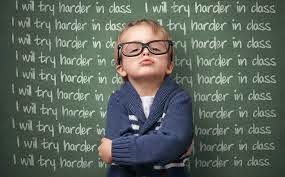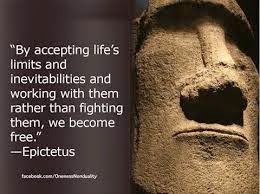Abstract
According to Howard Gardner’s theory
of multiple intelligences (Gardner, 1993; Guilford, 1988) there are several
separate mental capabilities. In fact, Gardner’s 10 year research project,
Project Zero, funded and conducted through Harvard University, concluded that
there are at least eight separate intelligences: linguistic (verbal), musical,
spatial, logical-mathematical, bodily-kinesthetic (movement), interpersonal
(understanding others), intrapersonal (understanding self), and naturalist
(observing and understanding natural and human-made patterns and systems). The
purpose of this paper is to address the applications of multiple intelligences,
and to provide effective and ineffective uses of multiple intelligences in the
classroom to motivate students to learn.
Multiple Intelligences
Effective teachers understand for students
to become successful learners they must be highly motivated and engaged. Effective
teachers also understand that adopting the multiple intelligences approach to
teaching will not only enhance learning, but it will also aid in making
learning permanent. The experience behind the learning builds
connections to existing schema that fire and wire dendrites and spark cognition
to transfer information into higher ordered thinking.
 Intelligence
includes a myriad of abilities. World-renowned expert theorist on neuroscience,
Howard Gardner, conducted a 10-year research project, Project Zero, funded and
conducted through Harvard University that concluded that there are at least
eight separate intelligences. Howard Gardner’s brilliant conception of individual competence has
changed the face of education. Since then thousands of educators, parents, and
researchers have explored the practical implications and
applications of Multiple Intelligences theory– the powerful notion that there
are separate human capacities, ranging from musical intelligence to the
intelligence involved in self-understanding (Gardner, 1993).
Intelligence
includes a myriad of abilities. World-renowned expert theorist on neuroscience,
Howard Gardner, conducted a 10-year research project, Project Zero, funded and
conducted through Harvard University that concluded that there are at least
eight separate intelligences. Howard Gardner’s brilliant conception of individual competence has
changed the face of education. Since then thousands of educators, parents, and
researchers have explored the practical implications and
applications of Multiple Intelligences theory– the powerful notion that there
are separate human capacities, ranging from musical intelligence to the
intelligence involved in self-understanding (Gardner, 1993).
According to
Howard Gardner’s theory of multiple intelligences (Gardner, 1993; Guilford,
1988) there are several separate mental capabilities. Among these intelligences
are: linguistic (verbal), musical, spatial, logical-mathematical, bodily
kinesthetic (movement), interpersonal (understanding others), intrapersonal
(understanding self), and naturalist (observing and understanding natural and
human-made patterns and systems) (Hoy, 2009).
Howard Gardner’s Multiple
Intelligences theory offers ways to think about how people are each wired, and
what each person needs as an individual to learn. “The heart
of the MI perspective—in theory and in practice—inheres in taking human difference
seriously” (Gardner, 1998).
The findings from 10 years
of research on Multiple Intelligences (MI) confirm that each person is predisposed
to certain intelligences. This theory does not suggest that humans are incapable
of building skills in less dominant areas, merely that humans show strengths in
a particular area, or areas. Further studies have made correlations between
specific intelligences, such as mathematical-logical-spatial correlations (Hoy,
2009, Chapter 3).
Today, Project Zero’s work includes investigations into the
nature of intelligence, understanding, thinking, creativity, ethics, and other
essential aspects of human learning. Their mission is to understand and enhance
high-level thinking and learning across disciplines and cultures and in a range
of contexts, including schools, businesses, museums, and digital environments (“Harvard
Graduate School Of Education Project Zero”, 2014).
Culture and mindset are
influential in the academic path that an individual chooses. Research has
proven that much more can be achieved under the right conditions with
accurate and timely coaching. Timing and opportunity create the perfect climate
for learning and growing. The teacher of record strives to create optimal
learning conditions for all students, all of the time. Teachers have great
influence in guiding students to see multiple perspectives.
The differentiated
classroom is a great asset to guiding personalized learning, and aids in leading
students to mastery of content over time. Monitoring students as they utilize
multiple intelligences enables more students to look for and ask deeper level
questions. Facilitating the differentiated classroom takes practice, and is a
subset of skills beyond what is embedded within covering the curriculum. However,
this does not imply that all eight intelligences should be used simultaneously.
“There is no point in assuming that every subject can be effectively
approached in at least seven ways, and it is a waste of effort and time to
attempt to do this” (Gardner, 1998).
Utilizing a blend of
multiple intelligences students discover personal ways to cement their
understanding of the concepts at hand, and are able to defend their findings
and prove logical conclusions. How subject matter is approached is a key
component to utilizing MI in the progressive classroom. According to Gardner:
Approaching a concept, subject matter, and
discipline in a variety of ways: Schools try to cover too much. “It
makes far more sense to spend a significant amount of time on key concepts,
generative ideas, and essential questions and to allow students to become
familiar with these notions and their implications” (Gardner, 1998).
The teacher of record must
be empathetic, self-assured, use self-restraint, and balance emotional intelligence
to enhance what is delivered within any given lesson. As teachers guide their students
inside of the classroom in all things academic, they are equally engaged in
modeling the traits listed above. These are life skills that will aid students,
as they become problem-solvers. The emotional quotient (emotional intelligence),
or “EQ”, is the human component within these skills that is vital in building
skill sets in the ability to work collaboratively, and to be successful in all
endeavors.
These skills must be
practiced inside of the classroom. This practice takes many forms, such as
cooperative learning, peer assisted learning, learning centers, and one to one
learning. When students have multiple opportunities to practice a wide range of
intelligences they will be better prepared to become thinkers, communicators,
and achievers.
Ongoing
informal assessment while using a variety of intelligences must be monitored. Formal
assessments that happen a number of times throughout the year are necessary tools
to measure how close each student is to meeting individual learning goals. Daily
quick notes about individual student progress allow teachers to plan for differentiation.
Guiding each student to utilize his or her own personal strengths to come to
conclusions keeps motivation and engagement levels high. As students build new
experiences using a variety of skills confidence in multiple areas begins to
grow. What a student thinks about a particular subject may be retrained with a
different set of experiences. When
efforts are acknowledged, and not just the goals, the result is a positive
learning atmosphere. Finding ways to build new meaning from existing schema
allows learners to make new connections leading to higher ordered thinking.
Teachers who facilitate differentiated
classroom practices utilize creative homogenous and heterogeneous groupings of
students at different times to reach a variety of learning goals. It is
important to note the difference between intelligences and high, low, or
moderate academic levels.
Academic ability groupings can have both
disadvantages and advantages for students and teachers. Low-ability classes
seem to receive lower-quality instruction in general. Teachers tend to
emphasize lower-level objectives and routine procedures, with less academic
focus. Often there are more student behavior problems and, along with these
problems, increased teacher stress and decreased enthusiasm. The lower tracks
often have a disproportionate number of minority group and economically
disadvantaged students, so ability grouping becomes segregation in school.
Cross-age grouping by subject can be an effective way to deal with ability
differences in nongraded elementary schools. Within-class ability grouping, if
handled sensitively and flexibly, can have positive effects, but alternatives
such as cooperative learning are also possible. Ability grouping has benefits
for gifted students, as does acceleration (Hoy, 2009, Chapter 3).
Examples of Multiple Intelligences
Inside of the Classroom
An advantage of the multiple intelligences
perspective is that it expands our thinking about abilities and avenues for
teaching, but the theory has been misused. Some teachers embrace a simplistic
version of Gardner’s theory. They include every “intelligence” in every lesson,
no matter how inappropriate. A better way to use the theory is to focus on six
Entry Points—narrative, logical-quantitative, aesthetic, experiential,
interpersonal, and existential/foundational—in designing a curriculum (Gardner,
1991). For example, to teach about evolution, teachers might use the Entry
Points as follows (Kornhaber, Fierros, & Veenema, 2004):
Narrative: Provide rich stories about
Darwin’s voyage to the Galapagos Islands or traditional folktales about the
different plants and animals.
Logical-quantitative: Examine
Darwin’s attempts to map the distributions of the species or pose logical
problems about what would happen to the ecosystem if one species disappeared.
Aesthetic: Examine
Darwin’s drawings of the species he studied on the Galapagos Islands.
Experiential: Do laboratory activities such as
breeding fruit flies or completing virtual simulations of evolutionary
processes.
Interpersonal: Form research teams or hold
debates.
Existential/foundational: Consider questions about why species
die out or the purpose for variation in species.
(Hoy, 2009. Chapter 3)
Table 3.1
Misuses and Applications of Multiple Intelligence Theory
Recently
Howard Gardner described these negative and positive applications of his
theory. The quotes are his words on the subject.
|
Misuses:
|
|
Good
uses:
|
|
Source: “Reflections
on Multiple Intelligences: Myths and Messages,” by H. Gardner, 1998. In A.
Woolfolk (Ed.), Readings in Educational Psychology (2nd ed.)
(pp. 64–66), Boston: Allyn & Bacon. Used by permission of Howard Gardner,
Harvard University. (Hoy, 2009)
Conclusion
In conclusion Howard Gardner’s theory
of multiple intelligences (Gardner, 1993; Guilford, 1988) has changed the way
that educators think of intelligence. The applications of multiple
intelligences vary and provide effective ways to motivate students to learn when
they are used correctly. The nature of
intelligence, understanding, thinking, creativity, ethics, and other essential
aspects of human learning are exciting areas of opportunity on the educational
frontier. Differentiation and personalization of learning has never been more
documented or supported thanks to the work of Howard Gardner and the thousands
of educators following in his footsteps.
References
Harvard Graduate School of Education Project
Zero. (2014). Retrieved from http://pzweb.harvard.edu/
Gardner, H. (1993). Multiple Intelligences. : Basic Books.
Hoy, A. W., & Hoy, W. K.
(2009). Instructional leadership: A research-based
guide to
learning
in schools (3rd ed.). Boston, MA: Pearson Education.









